|
"One day, I want to own a lathe and turn beautiful writing instruments."
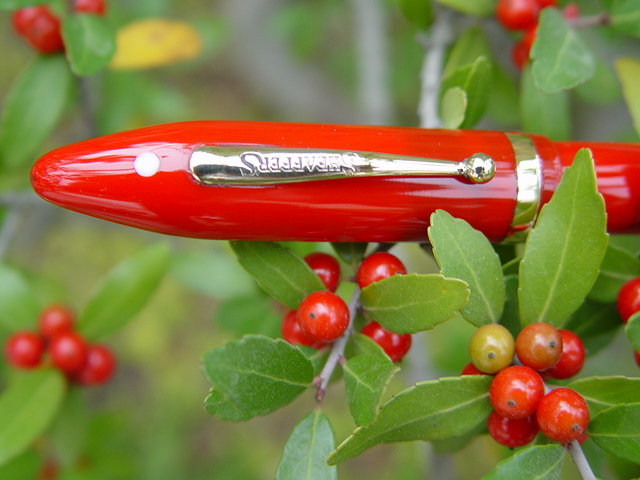
Red Balance
Chris Thompson made this promise to himself 35 years ago when he received
a beautiful hand made pen as a gift. His hobby and passion has tuned into quite
a busy production. Today Chris and his wife Julie often exhibit at many U.S. pen
shows and are well known among vintage and modern pen collectors. Chris produces
faithful reproductions of classic pens from the Golden Years and now introduces
his own newly designed Thompson Pens.
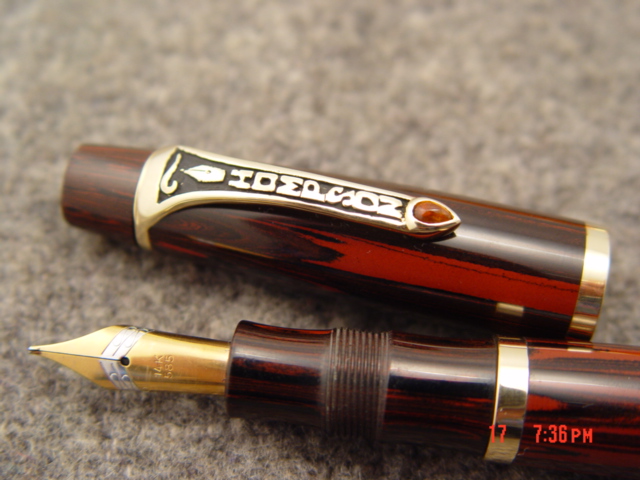
A Thompson Pen
The Reasons I Turn Replicas--An Essay!
by Chris Thompson
Some of the reasons I have for making "replica" samples of past
production pens are as follows. There will be those who do not agree with my motives
and who would like for me to redirect my efforts to only making pens of my own
design and namesake. That day may come in the future.
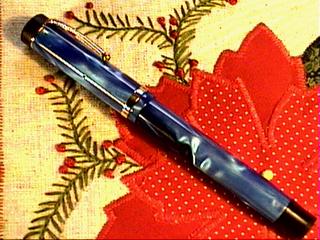
A little history...35 years ago, I was given a pen that had been turned out
of wood. Even the pocket clip was fashioned by hand. The ink refill was made by
the Bic Pen Company. I still have that work of art, and I prize it highly. I mused
to myself, "One day, I want to own a lathe and turn beautiful writing instruments."
Years went by before I invested in a lathe. Then, in 1996, I received a wood-turner's
supply catalog in the mail. It contained several pages of supplies which supported
the "kit-pen hobby". My dream of turning pens was greatly facilitated
because Mr. Jim Heusinger (of Berea Hardwoods Co., Inc. and a vintage pen collector
himself) was importing kit-pen parts by the millions and distributing them to
crafts persons through retail outlets.
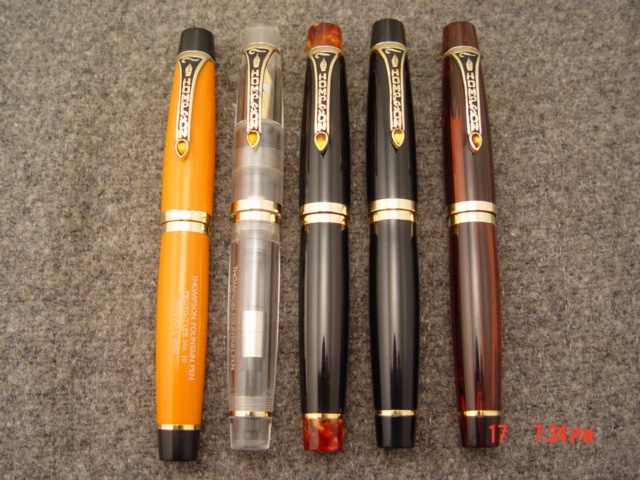
A selection of Thompson brand pens
As I began showing individuals the pens I was turning, they told me about
old fountain pens that they or other members of their families owned. Word spread
that I liked pens, and little-by-little, I began to collect most every fountain
pen I came across. Being the mechanical person I am, I began experimenting with
repair. In less than one year, I had obtained over 1,000 pens and had attempted
to restore all of them. Many of them were broken beyond repair, or shortly thereafter!,
given the fact that the pen repairman learning curve is somewhat lengthy and fraught
with failed attempts. Needless to say, my parts bins were ever increasing in numbers
of parts.
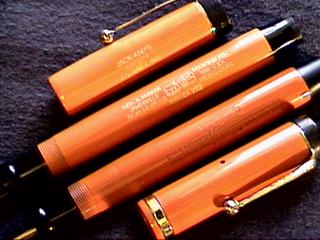
My favorite pens to work on were the Parker Senior Duofolds. The first Senior
Duofold I collected was a Senior Mandarin yellow, sold to me by a little ole'
church lady for $325. I had heard of Frank Dubiel's repair book by then, and I
had obtained a copy. Following his instructions to the letter, I quickly got out
my oil lamp and began heating the barrel so that I could "safely" remove
the section. In very short order, I received an education in how close one should
*not* hold early plastic pens to open flame! Fires fueled by early plastics tend
to be violent! I still have *some* parts of that Mandarin Yellow pen.
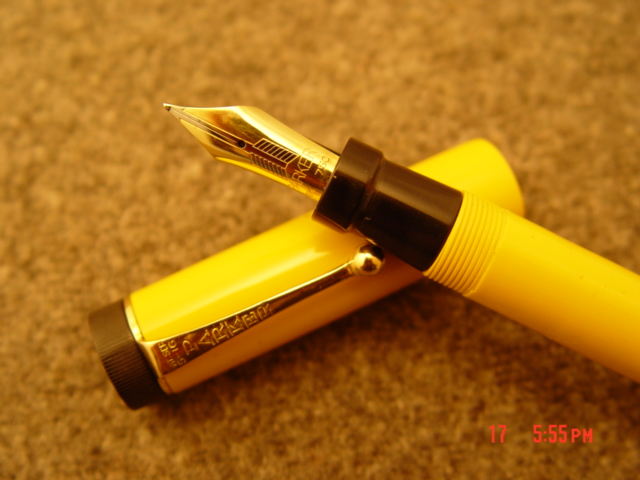
Dr. Richard Barbee lives in my city, and he became a dear friend and mentor.
My pen repair capabilities improved dramatically under his tutelage. He had 32!
Mandarin Yellows in his collection plus a drawer full of parts so he became a
great resource of pen parts. His collection of near 10,000 pens plus thousands
of parts inspired me beyond measure.
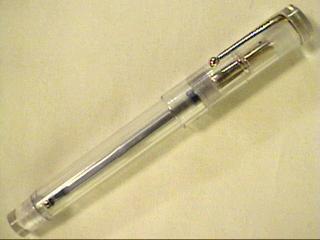
The major frustration I had with my collecting, was not the locating of old
pens but rather what to do with the mounting number of parts. I remember the day
in 1998 when the thought came to me, "Why don't you take some of those parts
and marry them to new caps and barrels since the old caps and barrels were damaged
beyond repair?" I knew that if I were going to do that project, I would want
the new caps and barrels to mechanically match the original ones as closely as
possible. Aside from my everyday profession, as a clergyman, I hold a doctorate
in the Administration of Vocational/Technical Education and had completed extensive
research on the subject of work ethics--in fact, that was the subject of my doctoral
dissertation. With this background, I had two objectives: One, build mechanically
correct pens. Two, don't try to pass them off as something they are not--original
pens. The next day, I took three Parker Senior Duofold pens to the machinist gauge
shop and had the thread patterns evaluated. Interestingly enough, none of the
three were the same. That meant, in machinist's terms, that according to today's
machine shop standards, two of the sample pens would not have passed a "go"
or "no-go" gauge test. An interesting assumption can be made from this
observation. Originally, Parker Pen Company probably had several production lines,
and each pen remained in line until it was finished. Each production line would
have had its own tooling, and none of them were exactly alike. My guess would
be that each lathe operator made his/her own set of cutters. Given the slight
differences in each pen that I took to be measured, we did the math and decided
to order taps and dies that divided the extremes of the three pens' thread patterns.
One thousand dollars later I had a set of taps and dies with which I could efficiently
duplicate caps, barrels, blind caps, and barrel end caps.
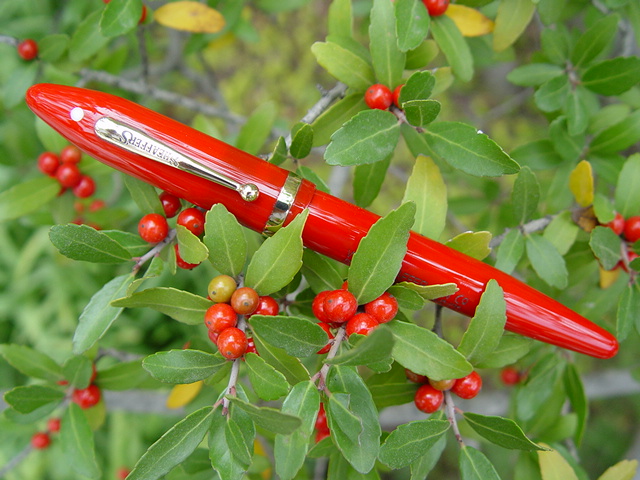
Now came the second question I had to wrestle. Would anyone construe my work
to be an original product of the Parker Pen Company? I asked this question to
three attorneys. All three answered me with basically the same answer which I
paraphrase, "Parker Pen Company could object in order to protect its ownership
of its patent and trademark if your work is perceived as a threat or cause for
loss against the company." These professionals did not write me a formal
legal opinion, but rather suggested I place a "mark" on each pen, not
to protect me from possible litigation, but rather to inform the purchaser that
this is not a product "in whole" of the Parker Pen Company. They also
spoke with me about the power of public perception over time. When I asked what
they meant, they explained that if the pens that I turn are sold to the public
and displayed to the public for a period of time, and the general response toward
them is positive rather than negative, my pen production would not likely be formally
challenged.
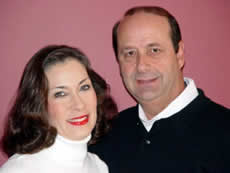 With
this information dealt with in my mind, I decided to turn a few pens, and with
them, test reactions. In 1998, I heard that there was a Pen Show in Kansas City,
Kansas. My wife Julie and I loaded up about 100 kit pens and my handful of replica
Parker Senior Duofolds plus another 100 or so vintage pens, and we drove to Kansas
City. I learned three things during the first few minutes of that show. The first,
I learned the meaning of a vintage pen "feeding frenzy". Second, kit
pens were of no interest to vintage pen collectors. Third, there was major interest
in my replica Parker Senior Duofold pens. With
this information dealt with in my mind, I decided to turn a few pens, and with
them, test reactions. In 1998, I heard that there was a Pen Show in Kansas City,
Kansas. My wife Julie and I loaded up about 100 kit pens and my handful of replica
Parker Senior Duofolds plus another 100 or so vintage pens, and we drove to Kansas
City. I learned three things during the first few minutes of that show. The first,
I learned the meaning of a vintage pen "feeding frenzy". Second, kit
pens were of no interest to vintage pen collectors. Third, there was major interest
in my replica Parker Senior Duofold pens.
Julie and I came home and developed a web site, joined the Zoss Pen List,
and the rest has been fun, educational, and much hard work.
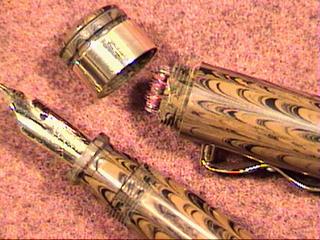
What I have sought to do through my pen-making is to give honor to Parker
Pen Company and others for pen design that have stood the test of time and use.
The intention to defraud any pen company or any individual through what I do has
never even been a consideration. Fraud, however, always has its servants. There
are those who try to build duplicates of a market design and then represent them
as something they are not, to those who tell little ole' ladies who come to pen
shows with family heirlooms that their pens are basically worthless because, "condition
is everything". They then purchase them for a few dollars and turn right
around and inflate the price to market standards and realize huge profits. My
guess is, that like the old Proverb, "there is none that is without sin,
no not one" fits the pen-collecting community just like it does the rest
of society.
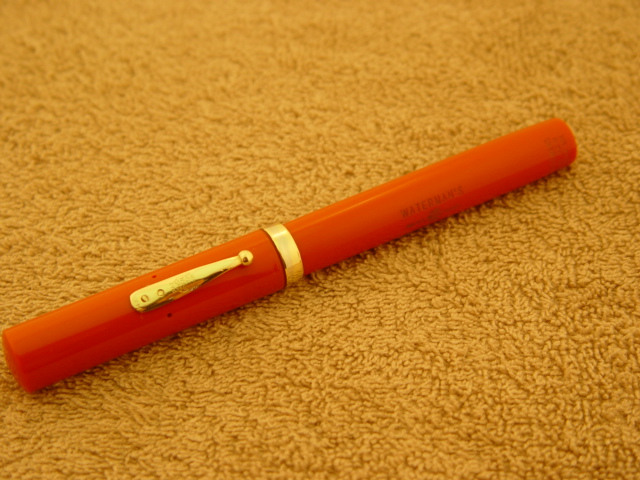
Julie and I plan to keep on making our pens and offering them for sale. Some
of our pens will be our own design, and will carry our own name. Others will be
duplicates of proven designs. You can rest assured that each design that we create
or replicate will bear our "mark". If the purchaser decides to misrepresent
our work by altering it in some way, that is a real dishonor to the pen community.
My mother, Bertha, always told me, "Chris, be sure your sins will find you
out." Guess what? I bear the marks of many wrong decisions that I have made
during my 55 years. She was right! 

Conclusion-- Why do I turn pens? One cannot imagine how fulfilling it is to
go to the shop with a piece of rod stock and a few parts and eight hours later,
walk out with a tool that is as beautiful, useful, appealing to the senses, and
powerful as a fountain pen can be.
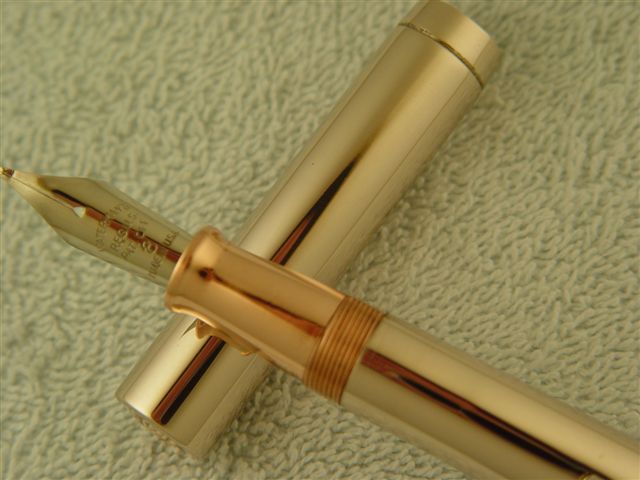
With what else could I place on record for all time the momentary wish of
my soul? In most cases the Parker nib and feed is original. In every case the
Sheaffer nib, feed, section, pocket clip, and lever are vintage.
© text and photos 2003 Chris Thompson
|